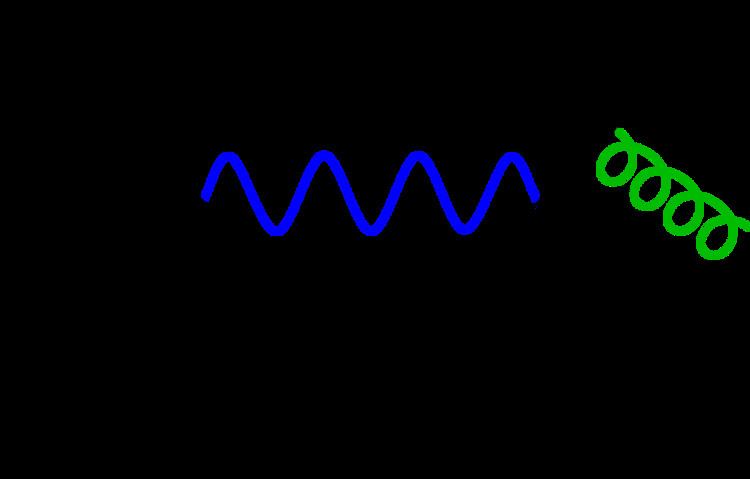 | ||
In physics, specifically in relativistic quantum mechanics and quantum field theory, the Pauli–Lubanski pseudovector named after Wolfgang Pauli and Józef Lubański is an operator defined from the momentum and angular momentum, used in the quantum-relativistic description of angular momentum.
Contents
It describes the spin states of moving particles. It is the generator of the little group of the Lorentz group, that is the maximal subgroup (with four generators) leaving the eigenvalues of the four-momentum vector Pμ invariant.
Definition
It is usually denoted by W (or less often by S) and defined by:
where
In the language of exterior algebra, it can be written as the Hodge dual of a trivector,
Note
Wμ evidently satisfies
as well as the following commutator relations,
Consequently,
The scalar WμWμ is a Lorentz-invariant operator, and commutes with the four-momentum, and can thus serve as a label for irreducible representations of the Lorentz group. That is, it can serve as the label for the spin, a feature of the spacetime structure of the representation, over and above the relativistically invariant label PμPμ for the mass of all states in a representation.
Massive fields
In quantum field theory, in the case of a massive field, the Casimir invariant WμWμ describes the total spin of the particle, with eigenvalues
where s is the spin quantum number of the particle and m is its rest mass.
It is straightforward to see this in the rest frame of the particle, the above commutator acting on the particle's state amounts to [Wj , Wk] = i εjkl Wl m; hence W→ = mJ→ and W0 = 0, so that the little group amounts to the rotation group,
Since this is a Lorentz invariant quantity, it will be the same in all other reference frames.
It is also customary to take W3 to describe the spin projection along the third direction in the rest frame.
In moving frames, decomposing W = (W0, W→) into components (W1, W2, W3), with W1 and W2 orthogonal to P→, and W3 parallel to P→, the Pauli–Lubanski vector may be expressed in terms of the spin vector S→ = (S1, S2, S3) (similarly decomposed) as
where
is the energy–momentum relation.
The transverse components W1, W2, along with S3, satisfy the following commutator relations (which apply generally, not just to non-zero mass representations),
For particles with non-zero mass, and the fields associated with such particles,
Massless fields
In general, in the case of non-massive representations, two cases may be distinguished. For massless particles,
where K→ is the dynamic mass moment vector. So, mathematically, P2 = 0 does not imply W2 = 0.
